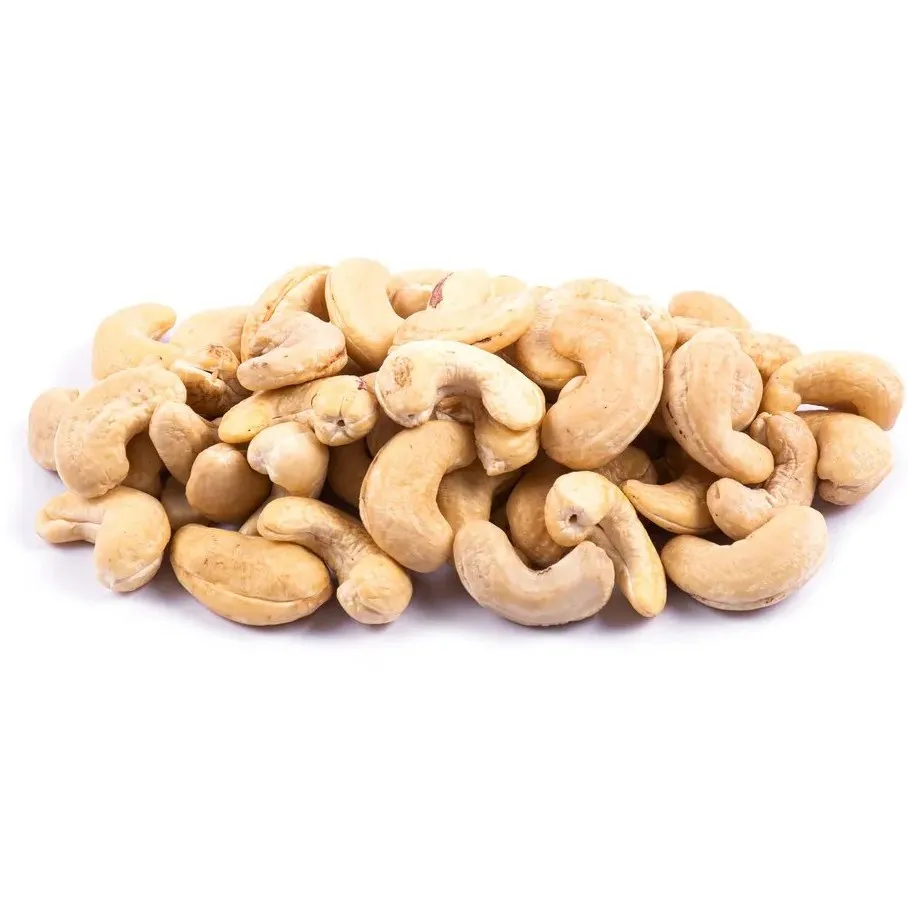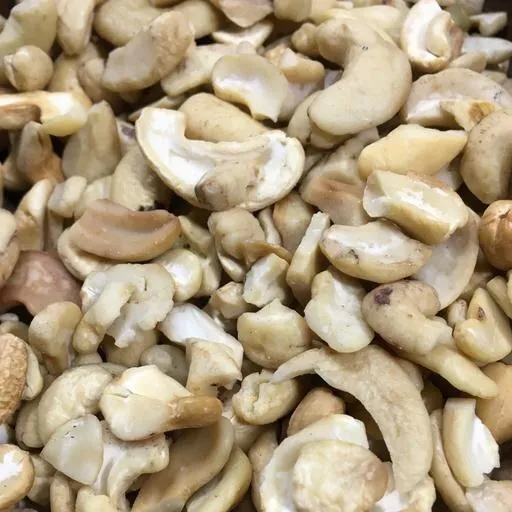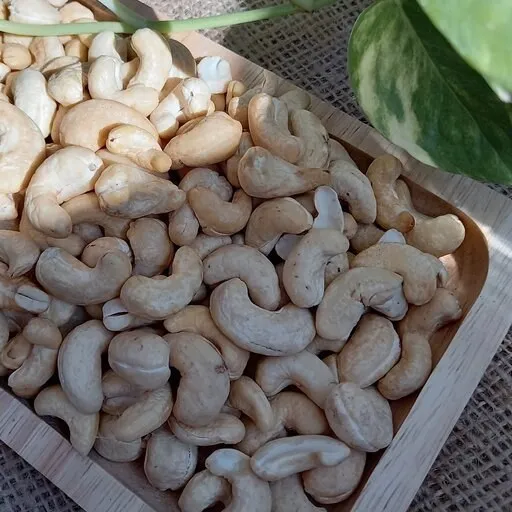Cashew nuts are a popular snack across the globe, known for their rich flavor and numerous health benefits. While raw cashews and roasted cashews share a common origin, they differ significantly in flavor, texture, nutritional profile, and culinary applications. In this article, we will delve into the similarities and differences between raw cashews and roasted cashews to help you make an informed choice based on your preferences and dietary requirements.
Flavor and Texture:
Raw Cashews: Raw cashews have a mild, buttery flavor and a smooth texture. They may have a slightly sweet taste, with hints of bitterness. The texture is soft and slightly chewy, allowing for versatility in cooking and baking.
Roasted Cashews: Roasted cashews undergo a process that enhances their natural flavors. The roasting process brings out a rich and deep flavor, often described as nutty and slightly savory. The texture of roasted cashews is crunchy with a firm bite.
Nutritional Profile:
Raw Cashews: Raw cashews are a healthy snack option, as they are nutrient-dense and packed with essential vitamins and minerals. They are an excellent source of dietary fiber, protein, healthy fats, and minerals such as magnesium, phosphorus, and copper. Additionally, raw cashews are rich in antioxidants, including vitamin E.
Roasted Cashews: Roasting cashews alters their nutritional profile slightly. The roasting process may cause a minor loss of certain heat-sensitive vitamins, such as vitamin C, but the impact is minimal. Roasted cashews retain most of their nutritional value, including high levels of healthy fats, protein, dietary fiber, and minerals. However, it is worth noting that the roasting process may add small amounts of oil and salt, which can increase their calorie and sodium content.

Culinary Applications:
Raw Cashews: Raw cashews are highly versatile in the culinary world. They can be used in various dishes and cuisines, both sweet and savory. Raw cashews can be ground into a creamy cashew butter or used as a base for vegan cheese substitutes. They are often used as a topping in salads or added to stir-fries and curries for an added crunch. Additionally, raw cashews can be soaked and blended to create dairy-free milk alternatives.
Roasted Cashews: Roasted cashews are primarily enjoyed as a snack. Their crunchy texture and enhanced flavor make them a popular choice for on-the-go munching. They can also be used in baking, particularly in cookies, cakes, and granola bars, to add a delightful crunch and unique taste. Roasted cashews can be combined with other nuts and dried fruits to create flavorful trail mixes.
Health Benefits:
Both raw and roasted cashews offer several health benefits, thanks to their nutrient-rich profile.
1. Heart Health: Cashews contain monounsaturated fats, which have been linked to a reduced risk of heart disease when consumed in moderation. These healthy fats can help lower LDL (bad) cholesterol levels, thereby promoting heart health.
2. Weight Management: Cashews are calorie-dense, but they provide a feeling of satiety due to their high protein and fiber content. Including them in a balanced diet can aid in weight management by curbing hunger and reducing overall calorie intake.
3. Bone Health: Cashews contain essential minerals like magnesium, phosphorus, and copper, which play crucial roles in maintaining strong bones and preventing conditions like osteoporosis.

4. Brain Function: Cashews are a good source of magnesium, which plays a vital role in brain function and memory. Regular consumption of cashews may contribute to cognitive health.
Conclusion:
In conclusion, both raw and roasted cashews offer unique characteristics that cater to different preferences and culinary applications. Raw cashews are known for their mild, buttery flavor and soft texture, making them a versatile ingredient in various dishes. On the other hand, roasted cashews have a rich, nutty flavor with a satisfying crunch, making them an excellent choice for snacking or adding a unique taste to baked goods.
When it comes to the nutritional profile, both raw and roasted cashews provide similar health benefits. They are rich in healthy fats, protein, dietary fiber, and essential minerals. However, it is essential to note that roasted cashews may have slightly higher calorie and sodium content due to added oil and salt during the roasting process.
Ultimately, the choice between raw and roasted cashews depends on personal preference and dietary requirements. Enjoying cashews in moderation can contribute to a balanced and nutritious diet.Raw Cashews vs Roasted Cashews: A Comparative Analysis
1. Market Demand and Consumer Preferences:
Understanding market demand and consumer preferences is crucial for businesses in the cashew industry. While roasted cashews have long been favored as a popular snack option, the demand for raw cashews has been steadily rising in recent years. Health-conscious consumers are increasingly seeking out raw cashews due to their natural, unprocessed state and potential health benefits. By recognizing these shifting consumer preferences, businesses can tap into new market segments and diversify their product offerings.
2. Processing Methods and Production Costs:

The processing methods for raw and roasted cashews differ significantly, impacting the production costs incurred by businesses. Raw cashews undergo limited processing, involving removal of the outer shell and skin, while roasted cashews require additional steps such as dry roasting, seasoning, and packaging. The additional processing steps involved in roasting cashews can increase production costs, including energy consumption and labor expenses. Businesses must carefully consider the costs associated with each processing method and evaluate the market demand to optimize profitability.
3. Shelf Life and Storage Requirements:
Another critical consideration for businesses is the shelf life and storage requirements of raw and roasted cashews. Raw cashews, being unroasted, have a longer shelf life compared to roasted cashews. Raw cashews can be stored for up to a year when stored properly in a cool, dry place. On the other hand, roasted cashews have a shorter shelf life due to the oxidation process that occurs during roasting. Roasted cashews are typically recommended to be consumed within six months. Businesses must factor in these storage requirements and plan their inventory management accordingly to minimize wastage and ensure product freshness.
4. Packaging and Marketing Strategies:
Packaging plays a significant role in attracting consumers and promoting sales. When it comes to raw cashews versus roasted cashews, businesses can leverage packaging as a marketing tool to highlight the unique characteristics of each product. For raw cashews, packaging can emphasize the natural and unprocessed nature of the nuts, appealing to health-conscious consumers. In contrast, packaging for roasted cashews can showcase the rich, roasted flavor and the crunchiness that consumers expect from a roasted snack. By adopting effective packaging and marketing strategies, businesses can effectively target specific consumer segments and differentiate their products in a competitive market.
5. Culinary and Foodservice Applications:
Cashews are widely used in the culinary and foodservice industry, and understanding the differences between raw and roasted cashews is crucial for businesses in this sector. Raw cashews, with their mild flavor and soft texture, are extremely versatile and can be used in a variety of recipes. They are commonly used in both sweet and savory dishes, including smoothies, sauces, vegan cheeses, and desserts. On the other hand, the rich and nutty flavor of roasted cashews makes them an excellent addition to salads, snack mixes, and baked goods. By promoting the different culinary applications of raw and roasted cashews, businesses can cater to the diverse needs of chefs, bakers, and foodservice providers.
6. Export Opportunities:

Cashews are a globally traded commodity and understanding export opportunities is vital for businesses in the cashew industry. Different countries have varied preferences when it comes to raw and roasted cashews, presenting opportunities for businesses to tap into different markets. For instance, countries in Southeast Asia such as India and Vietnam are major exporters of raw cashews, catering to the growing demand for raw cashews worldwide. In contrast, roasted cashews are particularly popular in Western countries where they are consumed as a snack or used as an ingredient in various cuisines. By identifying export opportunities and adapting to market demands, businesses can expand their reach and increase profitability.
7. Health and Wellness Trends:
The global health and wellness trends have a significant impact on the cashew industry. Raw cashews, being less processed, are often perceived as a healthier option compared to roasted cashews. Health-conscious consumers are increasingly seeking out minimally processed foods, and raw cashews perfectly fit into this trend. The nutritional profile of raw cashews, with their high fiber, healthy fats, and essential minerals, aligns with the growing demand for wholesome and natural snacks. Businesses can capitalize on this trend by promoting the health benefits of raw cashews and positioning them as a nutritious snacking option.
8. Consumer Education and Awareness:
Educating consumers about the differences between raw and roasted cashews is crucial for businesses. Many consumers may not be aware of the variations in flavor, texture, and nutritional profile between raw and roasted cashews. By providing detailed information and conducting consumer education initiatives, businesses can help consumers make informed choices based on their preferences and dietary requirements. This can be achieved through various channels, including product labeling, social media campaigns, and collaborations with health and wellness influencers.
9. Product Innovation and New Flavors:
Cashew businesses can explore product innovation and develop new flavors to cater to the evolving tastes of consumers. While roasted cashews come in a variety of flavors, such as salted, honey-roasted, and spicy options, there is potential for introducing innovative flavors in raw cashews as well. For example, businesses can experiment with natural flavorings like cinnamon, vanilla, or even savory options like herb-infused raw cashews. By offering unique and exciting flavor choices, businesses can attract a broader customer base and stand out in a competitive market.
10. Ethical Sourcing and Sustainability:

Sustainable sourcing practices and ethical considerations are increasingly important for businesses in the cashew industry. This includes ensuring fair trade practices, supporting farmer livelihoods, and minimizing environmental impact. Businesses can collaborate with community organizations and certifying bodies to ensure responsible sourcing and fair wages for cashew farmers. By promoting their commitment to sustainability and ethical practices, businesses can attract environmentally and socially conscious consumers, creating a positive brand image and contributing to long-term industry sustainability.
Conclusion:
The differences between raw cashews and roasted cashews offer diverse opportunities and challenges for businesses operating in the cashew industry. By understanding consumer preferences, market demand, and the culinary applications of both types of cashews, businesses can tailor their product offerings, packaging, and marketing strategies to meet the needs of different consumer segments. Additionally, addressing health and wellness trends, educating consumers, exploring product innovation, and ensuring ethical sourcing practices can contribute to industry growth and sustainability. Ultimately, businesses that adapt to changing market dynamics and prioritize consumer needs will thrive in the competitive cashew market.










